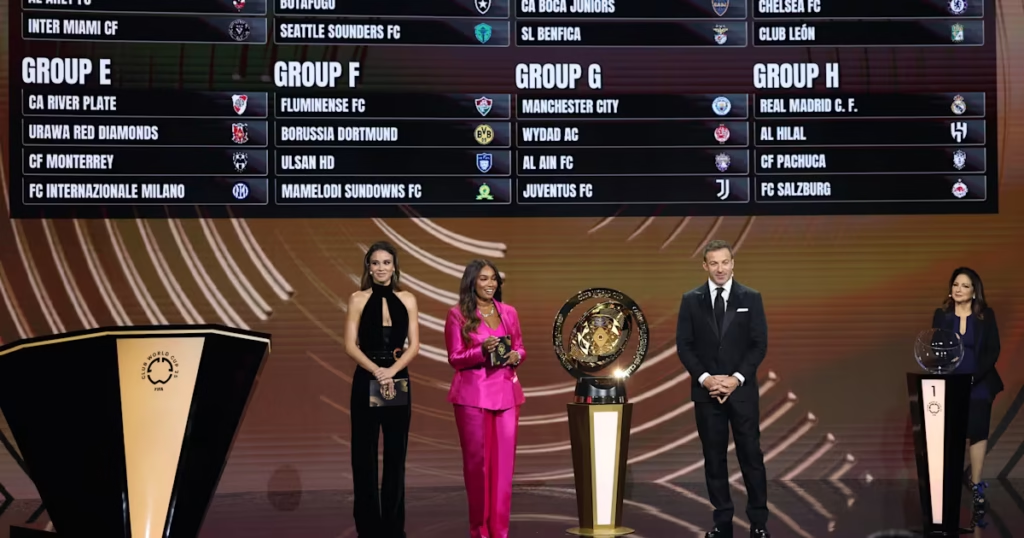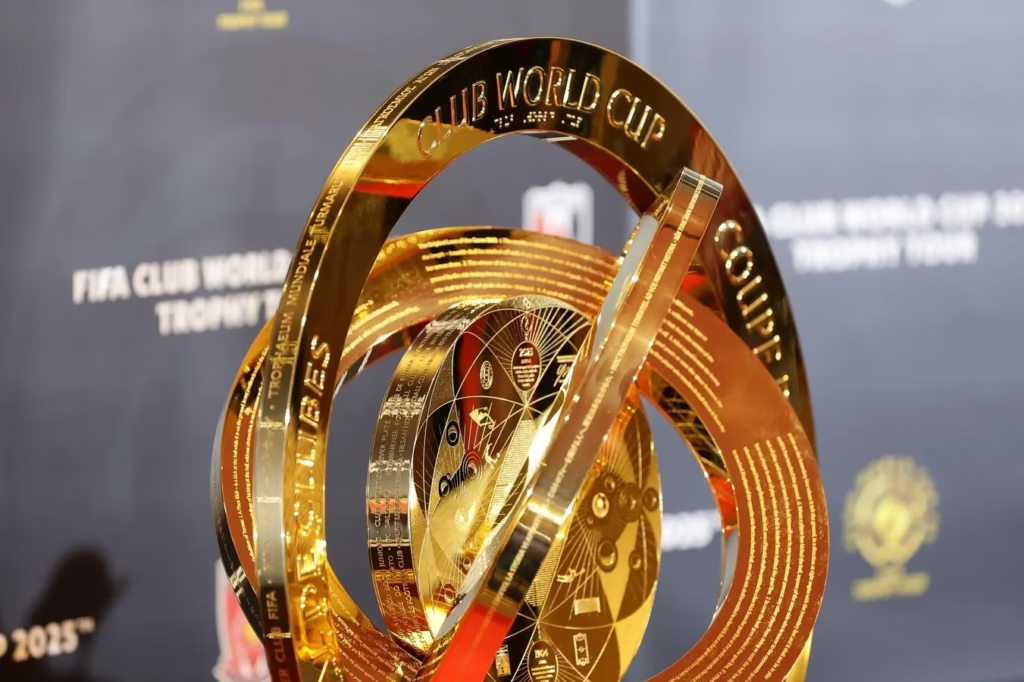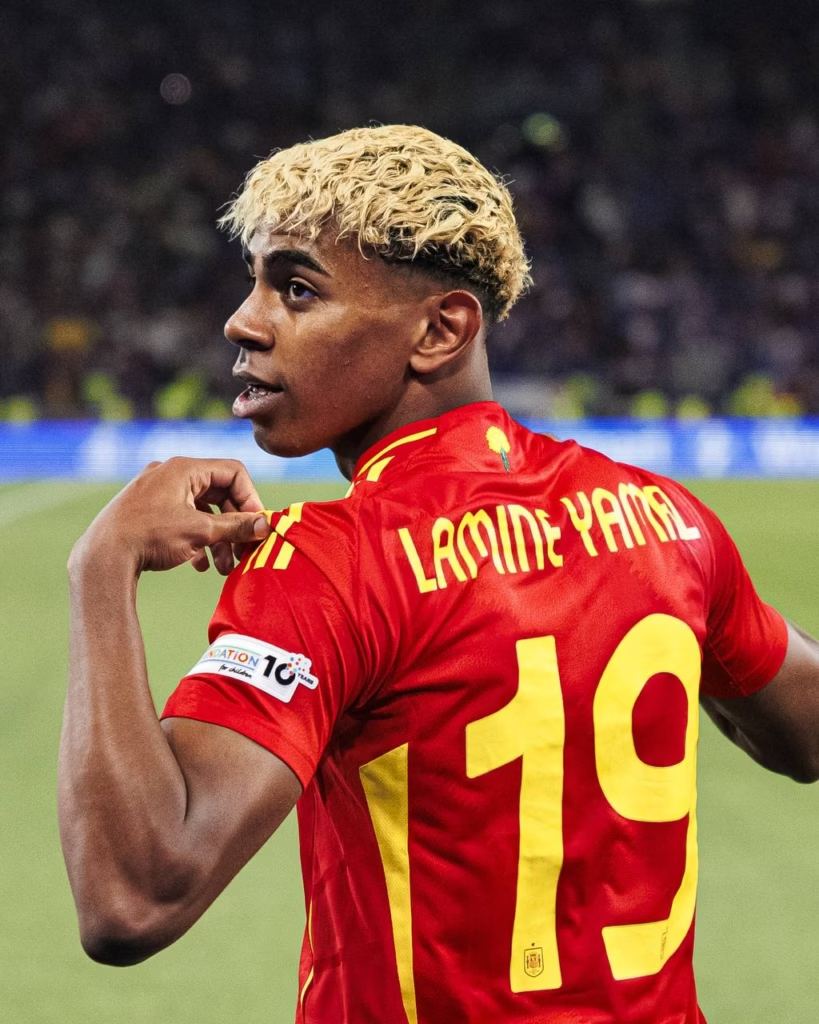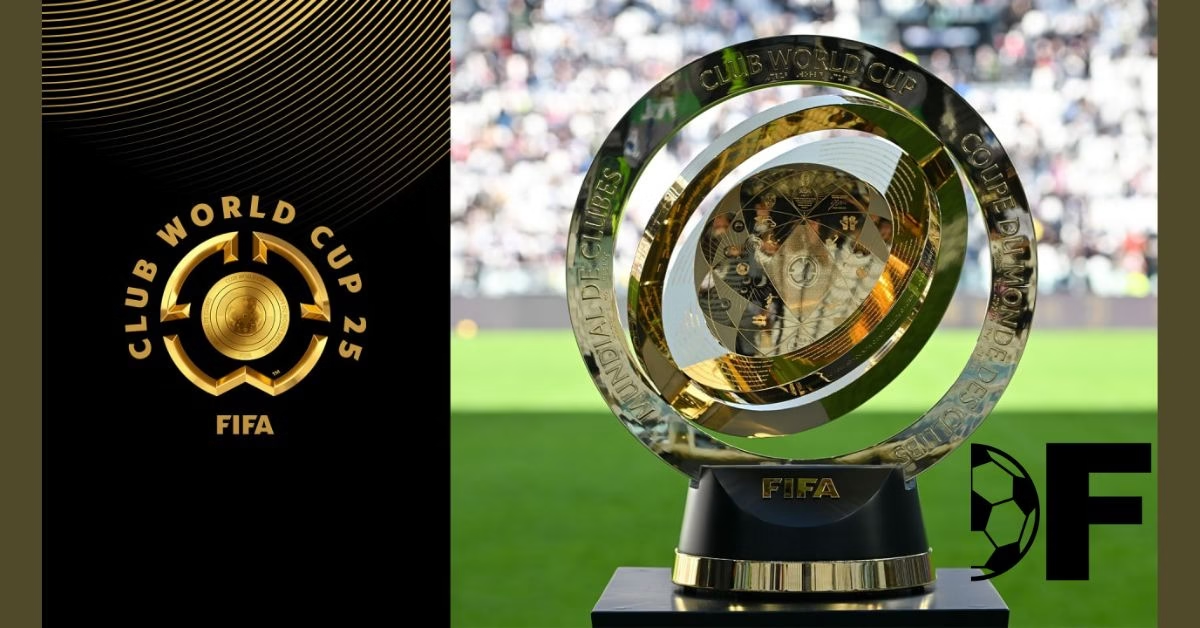- What to Expect from the FIFA Club World Cup 2025: Format, Teams, Controversies,
- FIFA Club World Cup 2025 Guide: Format, Teams, Criticism & Key Highlights,
- FIFA Club World Cup 2025: Full Breakdown of the 32-Team Tournament,
- Why the 2025 FIFA Club World Cup Is Sparking Debate Across Global Football,
- FIFA Club World Cup 2025 Preview: Format Changes, Player Concerns & Host Nation Challenges,

The FIFA Club World Cup: A New Era of Global Club Football
The FIFA Club World Cup — a tournament that brings together top men’s club teams from around the globe — is about to enter a bold new chapter.
What was once a relatively low-key, yearly affair is now being reimagined into something far bigger, with FIFA planning a dramatic expansion starting in 2025.
While the competition has been around since 2000, it never quite caught on in Europe as a must-watch event.
But that perception has started to shift, especially after the 2023 edition, prompting FIFA to rebrand and raise the stakes.

A Super-Sized Format for 2025
Come 2025, the tournament will no longer be an annual week-long showdown among just seven teams.
Instead, it’s going quadrennial — much like the national-team FIFA World Cup — with editions scheduled for 2025, 2029, 2033, and so on.
The upcoming event in the United States will be a month-long spectacle, running from June 14 to July 13, with 32 teams playing a total of 63 matches.
That’s a major leap from the former 7–10-day format.
Here’s how the FIFA Club World Cup 2025 qualification breaks down:
- Europe (UEFA): 12 slots, including the past four UEFA Champions League winners, plus eight top-ranked teams based on UEFA’s club rankings over four years.
- South America (CONMEBOL): 6 slots — the last four Copa Libertadores winners and two more high-ranking clubs.
- North America (CONCACAF), Africa (CAF), and Asia (AFC): 4 teams each, mainly made up of recent winners of their continental Champions Leagues.
- Oceania (OFC): 1 spot, typically awarded to the best-performing OFC Champions League winner over the past four years.
- Host Nation: The U.S. gets to include one domestic club automatically.
The format mirrors the World Cup: eight groups of four teams, round-robin group matches, and then the top two from each group move on to a straight knockout phase — Round of 16, Quarterfinals, Semis, and the Final. The prize pool? A staggering \$1 billion, with the winner potentially taking home up to \$125 million.

Controversies and Criticisms of FIFA Club World Cup 2025
Despite the grand plans and eye-popping figures, the revamped Club World Cup isn’t without its share of drama — and not the good kind.

Player Workload and Wellbeing:
One of the biggest concerns being voiced — especially in Europe — is the impact on players.
Many are already juggling jam-packed calendars filled with domestic leagues and continental competitions.
Now, a high-intensity, month-long tournament in what’s usually their offseason?
It’s not sitting well.
Player unions are pushing back, even considering legal steps.
Big names like Kevin De Bruyne and Phil Foden have openly questioned the logic of the schedule, with De Bruyne even refusing to extend his contract just to play in the tournament.
Add the summer heat of American cities to the mix, and the risk of fatigue or injury seems very real.
An “Artificial” Tournament?
Critics haven’t held back. Pundits, especially on ESPN FC, call the tournament “artificial” — from the manufactured transfer windows to the perception that some teams have been squeezed in just for appearances. Many view the whole thing as FIFA President Gianni Infantino’s pet project, more about revenue than the love of the game.
The trophy? It’s been awkwardly promoted — including a photo-op with Donald Trump — and even has Infantino’s name engraved twice.
This has only fuelled the notion that FIFA is blurring the lines between promoting the sport and monetizing it,
leading to what some call an overloaded and overheated football calendar.

Questionable Qualification:
Then there’s the matter of who’s playing.
For instance, Chelsea qualified because they won the Champions League four years ago — which feels a bit outdated. Meanwhile, clubs like Liverpool, Barcelona, and Napoli aren’t even in the lineup. Lamine Yamal, arguably the most exciting young talent right now, won’t feature either.
It’s left some fans scratching their heads, wondering how “current” this Club World Cup really is.
Too Big, Too Soon?
Going from seven to 32 teams in one go feels like a massive jump.
Some argue FIFA could’ve tested the waters with a 16-team version first.
And while more teams might sound exciting on paper, there’s a fear that quantity could dilute quality — a complaint also leveled at the expanded European Championship.
Reports suggest that ticket sales haven’t exactly been flying, especially for matches between lesser-known clubs.
Pricing has also been a sore spot, though FIFA has since adjusted some of the rates.
Challenges in the Host Nation:
The U.S. is a massive sports market, but not without complications.
Political tensions could affect international travel, and public transit in some cities, like Miami, may struggle to handle the surge in fans.
Plus, the Club World Cup will be competing with the NBA Finals and other American sporting events for attention.
FIFA is introducing new pitch systems, but concerns over field quality remain.

Teams and Expectations
Reception varies depending on where you are in the world.
In Europe, it’s more of a shrug — the vibe is lukewarm at best.
But in places like South America, the excitement is off the charts.
Top European Clubs (UEFA):
European teams are still the favorites, and bookmakers agree. Real Madrid, PSG, Manchester City, Bayern Munich, and Chelsea are seen as front-runners.
- Real Madrid: With a new manager (Xabi Alonso) and fresh faces like Trent Alexander-Arnold, who joined early for €10 million, Los Blancos are clearly aiming to win. Jude Bellingham is even delaying shoulder surgery to compete — a signal that this tournament matters to them. Expect squad rotation in the group stage.
- Manchester City: The board wants a global branding moment, but there seems to be a disconnect with Pep Guardiola and the players. Some might treat it as an unnecessary extension of an already exhausting season. If focus dips, City could be a surprise early exit.
- Chelsea: With American ownership eager to boost their global image, Chelsea views this as a golden opportunity. Manager Enzo Maresca’s long-term contract and new talents like Liam Dilapin could help spark a strong showing — and that prize money is vital for Financial Fair Play.
- PSG: Young, energetic, and riding high after a good Champions League run, PSG is full of promise. They’ll be a fun team to watch.

South American Contenders (CONMEBOL):
The tournament means everything to South American clubs. Brazil’s league is pausing for a month to support their teams. Flamengo and Palmeiras are expected to lead the charge. These squads bring fire, passion, and fans in huge numbers — especially with mid-season form, better adaptation to the heat, and that underdog hunger. Names to watch include Endrick (set to join Chelsea) and Eiggo Jesus (heading to Nottingham Forest).
MLS (USA):
Inter Miami, with Lionel Messi in tow, has been a big promotional tool — even if they were “crowbarred” into the tournament. Realistically, American clubs are targeting group-stage progress. Inter Miami’s defense is a known weak spot, mostly due to MLS’s unique squad-building rules.
Saudi Pro League (AFC):
Al Hilal is worth keeping an eye on. With stars like João Cancelo, Mitrović, and Ruben Neves, plus new manager Simone Inzaghi, this tournament could be their moment to showcase the Saudi league’s rapid rise.

The Road Ahead
The 2025 FIFA Club World Cup is a high-stakes gamble.
It could be the crown jewel of global club football — or it might fizzle out under the weight of its own ambitions.
The prize money is massive, the format is bold, and the stakes are high. But the challenges — player fatigue, fan apathy in Europe, and logistical headaches in the U.S. — are just as real.
Will this new era of club competition take off, or will it crash and burn before it ever really gets going? We’re about to find out.
Stay connected with Dominate Football [https://dominatef.com] for all the latest updates.
Got a take? Share your thoughts below — we’d love to hear from you!


11 thoughts on “FIFA Club World Cup 2025 Guide: Format, Teams, Criticism & Key Highlights”